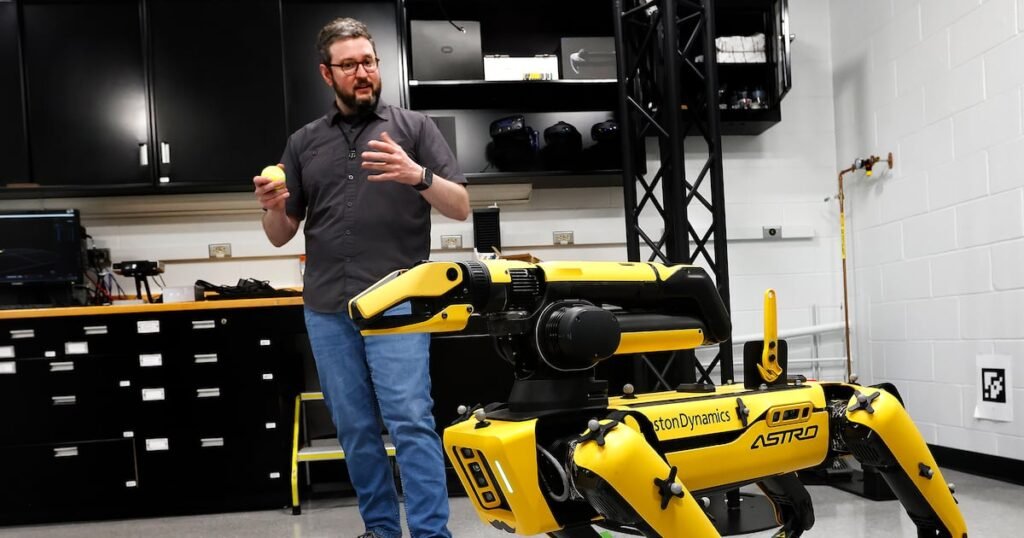Sean Donegan, AFRL’s digital manufacturing research team leader, assures visitors that Astro is harmless.
Still, the sight of a robot moving swiftly and unwaveringly across a tiled floor is chilling.
“This is impressive hardware,” Donegan said.
At AFRL’s Collaborative Automation for Manufacturing Systems (“CAMS”) Lab, located in Area B of Wright-Patterson Air Force Base, a small group of engineers and researchers pursue digital solutions to manufacturing problems.
The room itself is relatively small, perhaps 450 square feet. But some of the issues being attacked here loom large. How can the Air Force better equip its operators and technicians? How can the service more quickly produce the tools and weapons that airmen and maintainers need on the battlefield? Working prototypes Where can you jump from your laptop to the runway?
Can robots like ASTRO make impossible tasks impossible?
The CAMS Lab is the AFRL Digital Manufacturing Research Team’s first in-house lab and aims to answer these questions and more.
“This lab is like a field laboratory for all the work we do,” Donegan said.
Here, researchers are not doing basic research for everyone. They conduct applied research with specific objectives and end users in mind.
One of the features of this lab is the tools. Here, autonomous manufacturing, including collaborative robotics and augmented reality hardware and headsets, can be used to approach problems from new angles.
Virtual reality and augmented reality headsets can help operators plan how to train robots to paint planes and reinstall panels.
Not all lab work is done here. CAMS collaborates with university researchers. The company collaborated with Ohio State University to develop a new method for forging bulk metal parts.
Forged parts are often processed and formed using large presses. One of the most common forms of hot forging is closed forging using dies. But the Department of Defense could face significant delivery times, sometimes anywhere from 12 to 48 months, to obtain these parts. This is a major challenge for the Air Force (and other militaries) that need to deploy systems quickly.
Donegan said AFRL researchers have begun looking into the possibility of “open die” forging. This is a process that uses hammers and dies to work metal into shapes, and is said to be not much different from traditional blacksmithing.
But this is different from a blacksmith.
“Instead of having a human do it, we’re having a closed-loop robotic system do this,” he said. “It’s like a robot blacksmith.”
This process resulted in a working prototype. And from the Air Force’s “cooperative fighter” AI pilots to ground assistants, the potential of collaborative robotics is gaining traction.
ASTRO’s AFRL cost approximately $200,000. This isn’t cheap, but it requires context, Donegan says.
“In the grand scheme of things, it’s both a lot and a not-so-much thing,” he says. For example, acquiring a particularly sensitive scanning electron microscope can cost $1 million or more.
“In that sense, I think this is actually a pretty good investment.”

